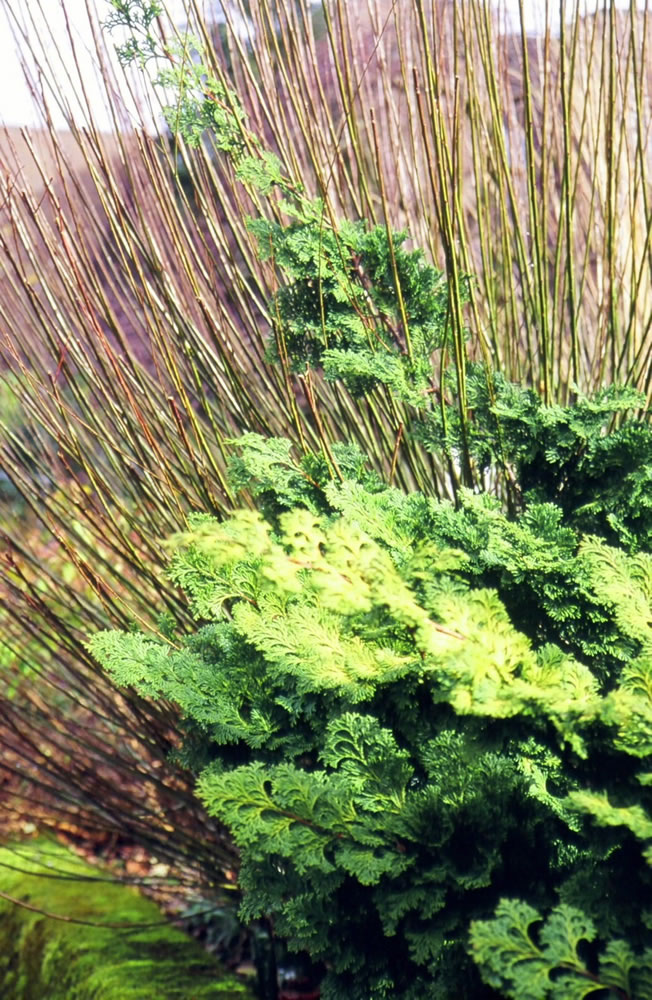Many winter tasks involve little more than keeping the garden tidy in some way.
Spring cleaning is like a power wash, spraying everything down from head to toe. Cleaning up after the onset of winter or after a bout of inclement winter weather is more like picking up after a wild party. Clear away leaves, twigs, branches and other wind debris from lawns and walkways. Whatever garden work you do in the midst of winter will relieve you of one more job in early spring.
There are numerous theories on when to do what in the garden. Some insist on cleaning up in fall as protection from pests and disease. Others argue that the natural pattern of plants going into dormancy for the season encourages birds and beneficials to visit the garden. I am somewhere in between these two schools of thought.
I like to leave any plants that have seed heads that will draw wildlife, as well as foliage that will protect the plant from chilling temperatures.
However, if you live in a neighborhood of multiple houses that stand close together, treat your neighbors respectfully by keeping your own garden on the tidy side. If your flower borders are visible from the street, it’s best to cut back weathered perennials to 12 inches or less. Any annuals, no matter how tenaciously they cling to life, should be removed from flower borders and planters.
In winter, you will see details that are hidden by foliage or flowers the rest of the year. Cut back the honeysuckle to a manageable number of main shoots and replace the fence post that needs to be re-set in concrete. Use a cleaning solution to wash the sides of your house before they are hidden once again behind new plant growth in spring. Clean out any debris that has accumulated in the spaces of decking. Use any tool that will slide between the decking materials without cutting into deck wood.
This is a perfect time of year to rejuvenate deciduous shrubs. The simplest method for shrubs that produce a thicket of stems from ground level is to cut back all shoots to a length of 12-24 inches. On a spirea, you may only need to cut off the spent flower heads. Any of the barberries look best if left to grow in a natural shape. Severely pruning many shrubs can create oddball, unnatural roundish squares that look out of place in any style of garden.
Lilac, hydrangea and other tall, multistemmed shrubs that have grown too dense will benefit by cutting back one-third of the shoots for two or three years in succession. I personally recommend a yearly habit of pruning out one-third of the oldest shoots on most deciduous shrubs. This way you keep the shrub open and healthy, and it will still produce a good show of flowers and berries from year to year. There will always be some older flowering stems, as well as new growth for plant vigor. In addition, the plant will reach its maximum size after three years.
Take note of soil
One of the most likely threats to plant survival in the Northwest garden is poorly drained soil. Garden soil that is wet and cold kills more plants than freezing temperatures. The colder the temperature, the more devastating these conditions become. Since we only see the part of the plant above ground, we often blame the plant’s demise on the temperature of the air. Unless the soil situation is improved, this will recur year after year, regardless of the plants you choose for this location.
Make a note in your garden journal and remember to amend the soil as soon as springlike weather returns and the earth has warmed up to a workable temperature. Mix a good supply of composted garden material into this area and then, next fall, do it again. If you have had a problem with this area for many years, give it some time to recuperate.
Although the most obvious time to plant in the garden is in spring or fall, there is an occasional reason to plant in the midst of winter. If, by chance, you have plants left over from late summer purchases, they are safer planted in the ground than sitting out in a pot or planter. The rule of thumb has always been to plant any time the ground is not frozen. Since I received a nursery gift certificate as a holiday gift, I will take advantage of that maxim and do a bit of winter plant shopping.
Robb Rosser is a WSU-certified master gardener. Reach him at Write2Robb@aol.com.



